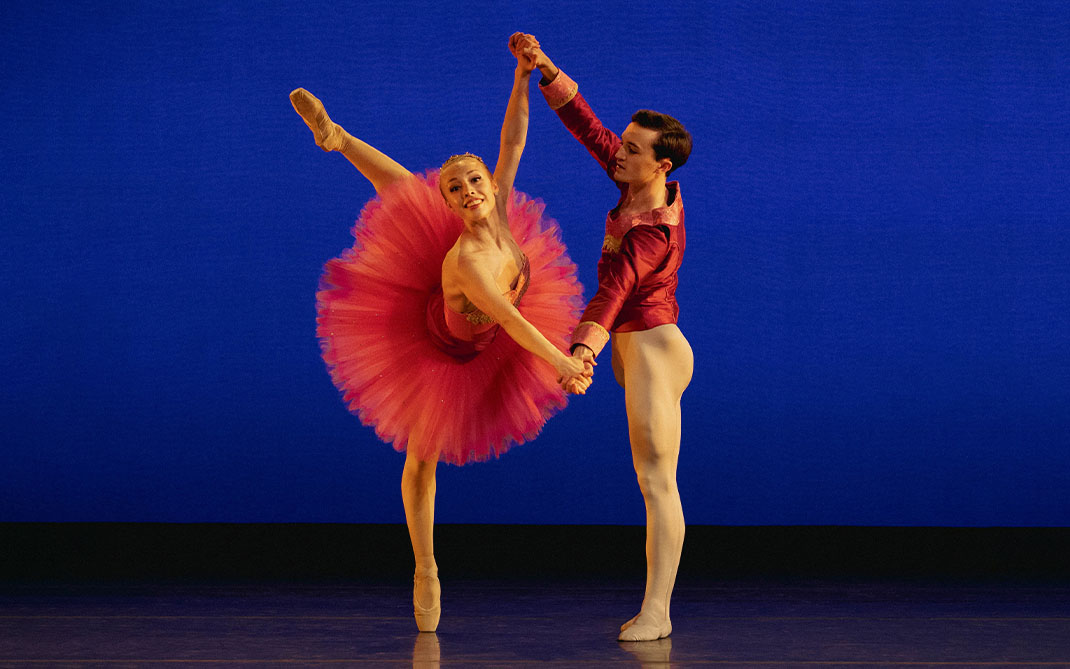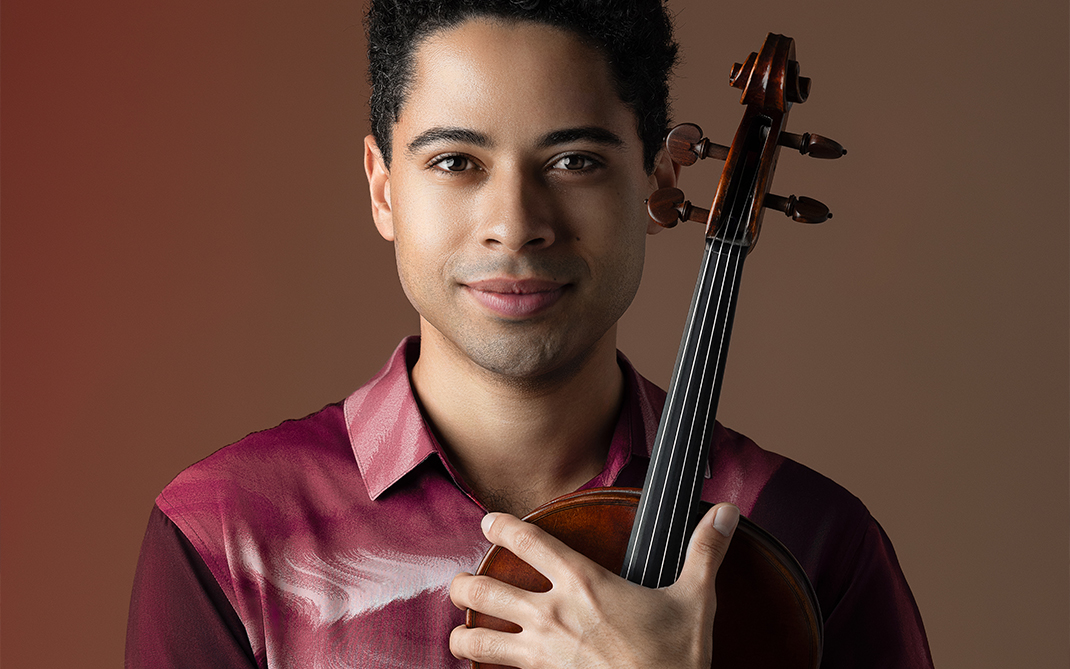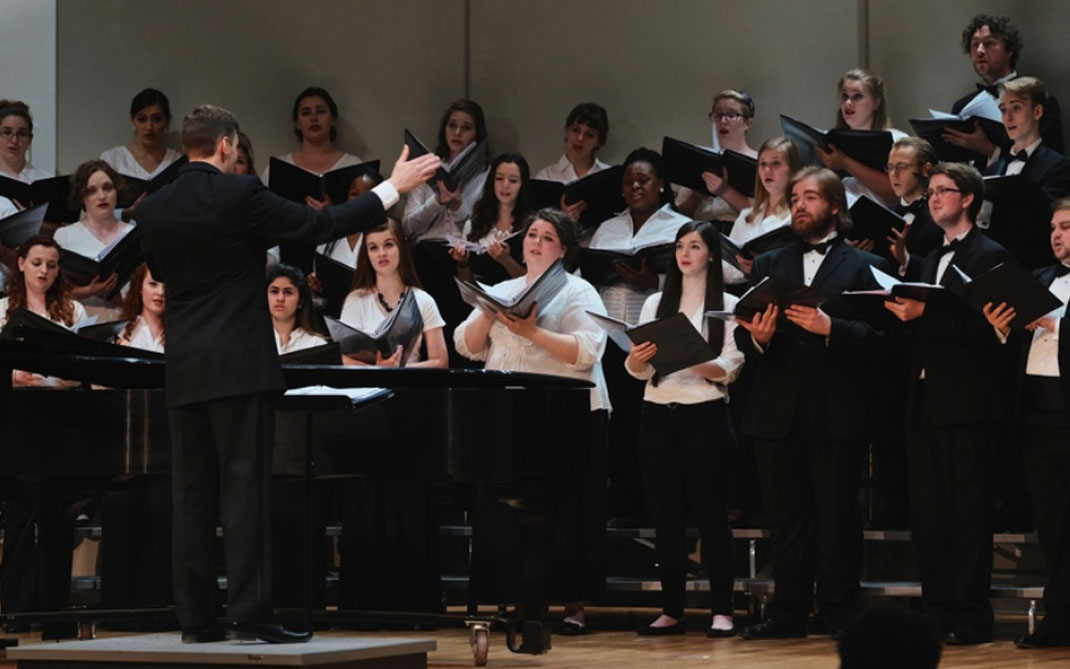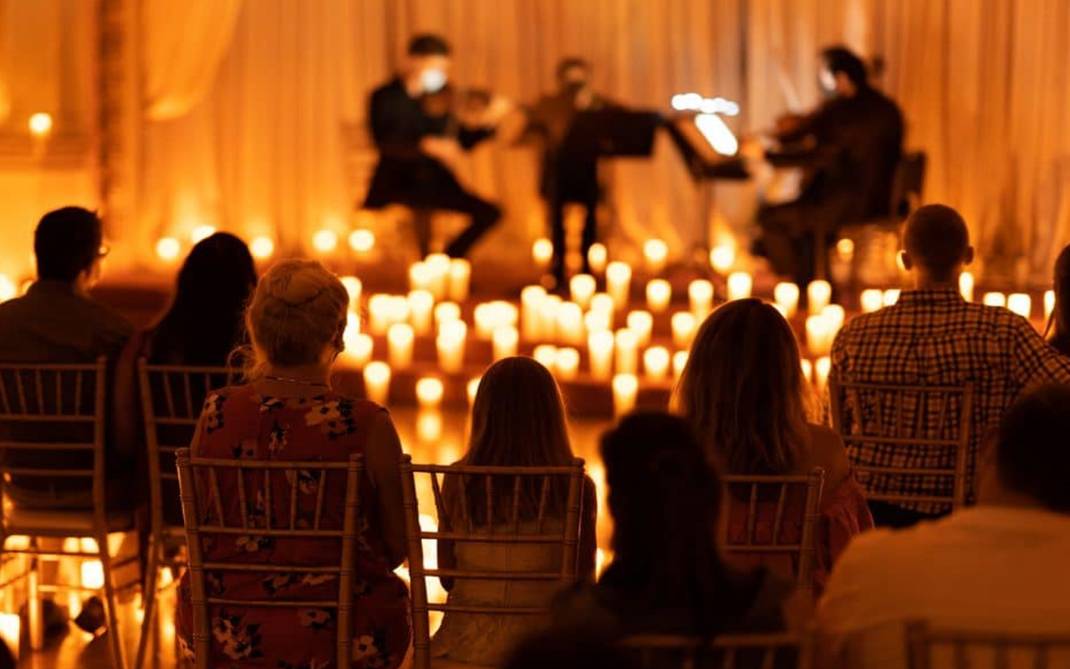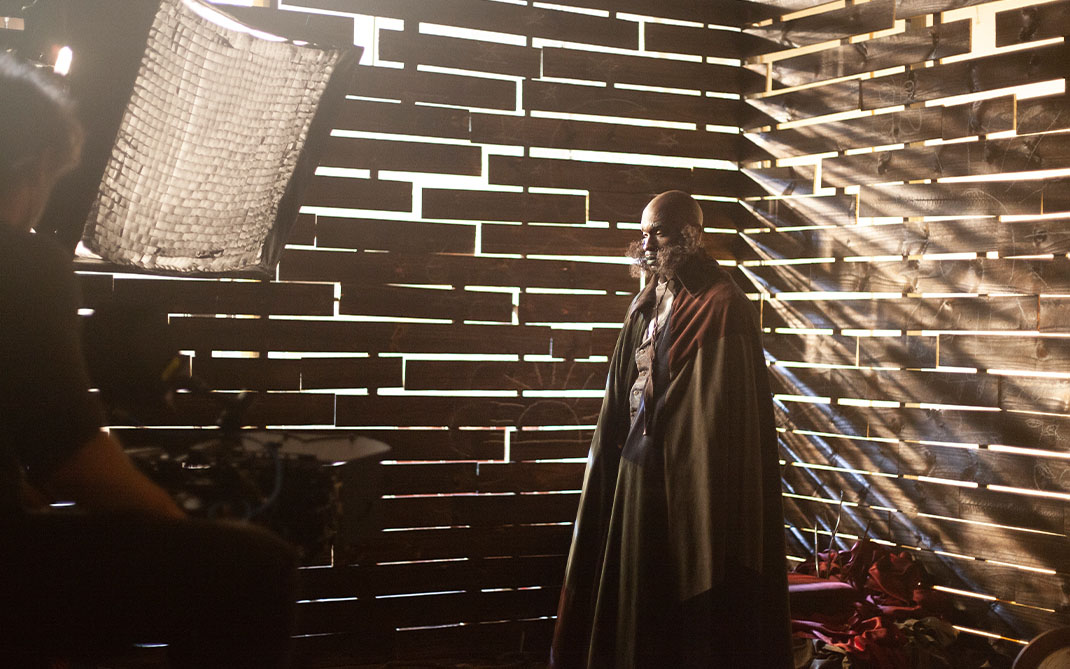Advocating for the Arts
Good morning. I have mixed emotions as I acknowledge this is Charlie Lucas’ final meeting as a member of our Board of Trustees. With nearly two decades on the board, and five years as its chair, Charlie’s contributions to UNCSA cannot be overstated. He has devoted time, energy and resources to steering this boat we call the School of the Arts.
It’s a vessel that seems to always be moving full steam ahead even while taking on a bucket or two of water. Charlie led this board, and this institution, through some of the most challenging economic and cultural shifts in recent history. And he did so with a captain’s strong grip and clear eyes. And when the winds shifted, he led our efforts to adjust our sails and move toward calmer waters. Today we are on course to realize our vision due to his leadership. While I am sad to see him leave this board, I know that his leadership will steer other organizations toward meeting their goals. I am profoundly grateful for his service and his friendship. Thank you, Charlie.
You’ve heard a lot about our strategic action plan over the past two years, and what it will take to attract the best students and faculty, sustain the highest standards of academic and artistic excellence, and support creative innovation and entrepreneurship into the next half century.
We may be artists and dreamers, but we’re also scrappy, pragmatic realists. We have to be. To realize our vision, and live up to our own expectations, we must accept and overcome chronic budget deficits, staff shortages, limited bandwidth, political interference, public scrutiny, and tough competition, not to mention conflicting priorities and agendas. To thrive in the current environment for public universities—especially at small arts-based conservatories like UNCSA—it takes an unwavering dedication to student success and an unshakable faith in the founding institutional mission and purpose, which we all share. For many of our faculty and staff, and our devoted volunteers, including so many in this room, it takes selflessness and sacrifice, and they deserve our highest gratitude and respect.
It also takes real money. Much more than the state can be expected to provide. And certainly much more than anyone in my position has ever told you we’ll need. This isn’t a tough-minded former corporate executive talking; this is a newly hardened administrator almost three years into a job that I love but at times find myself wondering how to make our alumni and supporters fully understand the magnitude of the challenges we face. We’re in the fortunate position of having raised more money in the past four quarters than at any time in our history. And I have no doubts about our ability to raise a lot more. But as we lean into the initial phase of a comprehensive campaign, and while everyone chomps at the bit for Ed and me to announce a specific fundraising goal, I’m going to take Ralph Womble up on his suggestion to offer a hard dose of reality about our current and future financial needs.
First—a little bit of history and background. Back in 1963, the North Carolina General Assembly appropriated $325,000 to establish a public arts conservatory. A few months later, local volunteers raised $850,000 in a two-day phonathon, and the city donated a cast-off high school, gymnasium, and a field house that had been built in 1929. Over the years we’ve benefited from various public bond referendums, and we’ve raised enough private money to establish a few endowed faculty positions, hire renowned guest artists, and offset tuition and fees with small scholarship awards. It has become a source of pride and badge of honor to make do with what we can piece together. But the truth is we’ve never had a rock-solid financial foundation.
We must change that. We can’t rely so heavily on state appropriations, not for our basic operational needs, much less to stake our claim as a premier arts conservatory. Currently, state appropriations account for 64 percent of our budget. I’ll be honest: The fear of budget cuts is what keeps me up at night, because even a single-digit percentage reduction would quell the momentum we’ve generated to a grinding halt. Like other small schools in the UNC system that run on razor-thin margins, UNCSA must maintain our exemption from further cuts, and transition over the long term from being state-supported to state-supplemented.
If only we could make up the difference through tuition and fees, like private colleges and universities. These account for 31 percent of our budget—extremely low compared to our private peers, where that number often exceeds 70% of budget. But I’m loathe to increase tuition any more than we absolutely must to offset escalating costs and unfunded state mandates. Our students and parents pay their fair share already, and we can’t expect them to foot the bill for deferred maintenance, much less for new initiatives and capital projects. Low tuition gives us a strong competitive advantage against similar colleges and universities where tuition, fees, and expenses can easily exceed $70,000 a year (even our out-of-state students pay a fraction of that). We also have a moral imperative to make good on the state’s constitutional mandate that “The General Assembly shall provide that the benefits of The University of North Carolina and other public institutions of higher education, as far as practicable, be extended to the people of the State free of expense.”
Free of expense? Not in my lifetime, but we need to ramp up our private support to maintain a margin of excellence in the years ahead. Many schools like NC State can count on more than 30% of their budget to come from individual, alumni, and corporate support; ours hovers around 6%. The good news is that there’s nowhere to go but up! And that’s a great starting point for the school’s first major campaign since the ’90s.
So how much can we raise, and what do we need? Needs and initiatives driven by our strategic plan add up to $652 million over the next five years. Almost half of that, $303 million, is projected unfunded deficit. I’d love for that to be our goal, but we all know it would be too much to expect, even from Ed Lewis and his team. What I can tell you is that no matter what campaign goal we announce, my personal aim will be to raise as much as we can, regardless of whether we’re in campaign mode. That’s not just best practice for any leading university or nonprofit; it should be considered mission critical by every stakeholder.
Over the past few months, our administration has put forth an ambitious plan to shore up infrastructure, address deferred maintenance, restore organizational health, and build innovative programs that will propel us to the forefront of performing arts and media education in the 21st Century.
Before I share our funding wish list, I need to make an important disclaimer. This is only a starting point, and subject to change with shifting priorities, curricular evolution, and emerging technologies. We’ll continue to build this out in more detail to ensure we can more accurately match our donors’ philanthropic interests with our institutional needs.
Number one on everyone’s list: scholarships. Each year, our admissions team and faculty scour the state and nation to identify the most gifted and qualified students. Very often, these same young artists are being aggressively recruited by other top conservatories – and even programs of lower quality – with larger endowments and deeper pools of scholarship funds.
Our average institutional grant is $5,764 compared to the average for our peer institutions of $14,677, or the average among public peer institutions of $7,239.
We must increase our scholarship dollars to ensure that our top prospects choose us instead of Carnegie Mellon, Indiana, Emerson or Southern Cal, and their talent in turn enhances UNCSA’s reputation.
The School of Design and Production needs $1.3 million in spendable funds per year, or 26 million in endowment, for undergraduate scholarships and graduate assistantships to keep pace with its competitors, who offer a whopping $19,000 average scholarship. Remember our average is less than $6,000.
Peer institutions of the School of Music offer average scholarships of $17,000. To compete, we need $280,000 per year for 16 undergraduate scholarships, and an additional $438,000 for graduate assistantships in the Chrysalis Chamber Music Institute. That amounts to an additional 15 million or so in endowment.
Each of our conservatories has demonstrated the need for scholarship funds, and no one articulates the need better than our students. Consider the words of Rickey Watson, who will graduate this year from the School of Drama: “(UNCSA) not only changed my life, but in fact saved my life.”
Composer Jessica Buford, graduating this year from the School of Music, said, “(My scholarship) encouraged me to continue the pursuit of my most fervent dream…”
And senior dancer Rebecca Van Dover who said, “My experience at UNCSA helped me realize all I was capable of. I am so grateful for my scholarship, because I could not have attended School of Dance without it.”
Scholarships are not only important for enrolling the best and most deserving students but also give them a fighting chance of realizing their dreams. More often than not, it takes young artists a few years to build a network and reputation, until their art can sustain them. If they’re working four jobs to pay off debt, what time will they have to go to auditions, build a website, or find collaborators? The surest way we can support their success is to keep their debts as low as we can, so they don’t have to give in, give up, and follow a path they didn’t choose.
Scholarship funding will always be an easy sell. It has such clear and immediate impact. But student success depends on mentored instruction from a strong, accomplished faculty, who are among our greatest—and most undervalued—assets. Most of them are accomplished performing artists, expert technicians, and creative masterminds who maintain solid connections in their industries. Our rigorous training requires instructors who are grounded in the fundamentals of their disciplines and in tune with sweeping changes in their fields. Our expert faculty need our support to remain on the cutting-edge to impart that knowledge to their students. They must have opportunities for professional development and creative exploration.
Our average faculty salary is $61,000, compared to $91,000 for faculty at our peer institutions. I know the cost of living in Winston-Salem is lower than in New York, Los Angeles, Boston or Pittsburgh, but I think we can all agree that to be competitive, we must increase salaries so we can recruit and retain exceptional instructors.
Earlier I mentioned endowed faculty positions. We have a few: Brenda Daniels in Dance, Dale Pollock in Film and Joe Mills in Liberal Arts. We need more, and here is some good news: the North Carolina Distinguished Professors Endowment Trust Fund matches eligible gifts dollar for dollar.
The time has never been better to invest in our faculty, particularly as we establish new and innovative programs from the ground up that require specialized training, experience, and expertise.
We can recruit the very best students and outstanding faculty, but we’ll never realize our vision with inadequate, and in some cases, crumbling facilities. We can’t count on bond referendums to meet our needs, much less achieve state of the art. We were nearly left out of the last go-round that funded renovations to the old library and only some of the upgrades needed for Performance Place. That’s why a major portion of our comprehensive campaign will focus on improving the spaces where our students perform, work and live every day.
Like the dorms. Paskill Stapleton and Lord, the enrollment marketing firm that we engaged to help with positioning research and recruitment materials, told us that while the state of our college dorms is a drawback now, in the very near future, it will actually deter enrollment. We can no longer accept having our students live in residence halls that are substandard and out of date. We’ve made HVAC and cosmetic improvements over the years, but we have to stop throwing good money after bad. It’s time for us to start planning for new dorms designed with our students’ particular needs in mind. I’ve been flatly told that the state is “out of the dorm business” and that we’ll have to pursue private funding--an estimated $30 million--to replace them. Partnering with a civic-minded private developer, or an angel donor, will be our only way forward, and we’re taking steps right now to make that happen.
We must also shore up our infrastructure in several critical areas that no one really wants to hear about. Currently, we have servers and networking switches located in basements, beneath leaky laundromats and sharing space with sump pumps. The IT consultant we recently engaged stated this was the worst environment for this equipment that he’d ever seen in the decades of doing this work. Going forward, we must not only remedy our existing problems, but build a solid foundation for future growth. Technology is disrupting and transforming arts, entertainment and education as we know it. It is imperative for us to develop new revenue sources and industry partnerships to keep up with the pace of change. Over the next five years, we estimate that we must invest a minimum of $5.6 million in technology initiatives and renovations to improve student learning outcomes and increase operational efficiencies.
If any of you know anyone who wants to start an endowment for deferred maintenance, I’ve got plenty of naming opportunities for you! For a campus built mostly in the ’70s, ’80s, and ’90s, there’s no end to the growing list. It will take $7.5 million per year over the next five years just to catch up on unfunded repairs and renovations, so we can finally get longtime faculty members like Tanya Belov out of the broom closet we converted into an office and into a space she can actually use to meet with students. To put that number in perspective, we’ll get about $1.3 million from the state this year to address mostly life and safety issues. The rest must come from private support, bonds, debt, or be put off for another year, and the year after that, and so on.
We’re incredibly grateful to the state’s taxpayers for approving the Connect NC bond funding last year, which we’ll combine with Alex Ewing’s generous $5 million gift to renovate Performance Place, our primary performance venue for the School of Drama and our on-campus learning lab for students in D&P. We’ll replace outdated theatrical lighting systems with state-of-the-art equipment, giving D&P students the opportunity to learn on systems that are industry-standard. We’ll also give facelifts to Freedman Theatre and Catawba Theatre, including new seating, carpet and fixtures, and we’ll upgrade the heating, air conditioning and ventilation systems to improve the patron experience. With additional funding, we can create a world-class performing arts center like those found at our competitors’ campuses. Our students deserve that, and so do patrons who attend our top-notch productions.
Likewise, the Stevens Center is overdue for major renovations. Our premier performance location and the centerpiece of arts development downtown is severely lacking in backstage areas, loading docks, storage, and lobby space. Its façade is dated and in disrepair, and entire floors are unused because they are uninhabitable, or they have been used inconveniently for storage. Imagine an expansive and beautiful lobby and box office area where traffic flows easily and patrons can gather comfortably before shows and during intermission. Imagine housing for guest artists on the upper floors. Imagine a theatre with comfortable seating and leg room. And imagine enough bathrooms to accommodate everyone in a timely procession during intermission!
Ultimately, I want the Stevens Center to be seen as the heart of a “creative corridor” that runs through downtown to our campus. That’s the vision we share with partners like the Arts Council and the Downtown Winston-Salem Partnership. I’m not ready to put a price tag on it yet, but now that the terra cotta has begun to fall from the upper floors, we’ve put up scaffolding to limit our liability while we hurry to figure that out. In the meantime, the shows must go on!
Here in the City of Arts and Innovation, we can and should be leaders in both spheres and our comprehensive campaign will include funding for several initiatives. For centuries, the performing arts have thrived on the success of continuous innovation. We’re seeing that now more than ever with the emergence of immersive theaters, virtual reality movies, multimedia music venues, and social media integration to engage audiences in ever more meaningful ways. To be at the forefront of performing arts and media education, we must boldly embrace innovation in our curriculum, and prepare our students to lead or transform the industries they enter. One way we’ll do that is through the Institute for Performance Innovation, which will be home to graduate programs in animatronics, virtual reality, and gaming. We’ll also do it through our new Choreographic Institute, which supports the creation of groundbreaking works by established and emerging artists. We’re exploring innovative curricula in each of our conservatories, and our campaign will target seed funding of at least $2 million for developing new initiatives and supporting existing innovations.
And as a state-supported institution, we owe it to North Carolina taxpayers to extend our economic impact and cultural influence beyond Winston-Salem. A decade ago, we were given a studio in High Point, but we’ve never had the money to do anything with it. We plan to turn it into a world-class digital sound stage and creative incubator, the only large-scale, turn-key facility of its kind in the Southeast. With a $10 million initial investment, this studio has the potential to generate revenue for the school and provide tremendous opportunities for our Film students and alumni. And it would position UNCSA at the forefront of the creative economy and technological innovation that’s taking root in the Triad and becoming an economic boon for the nation.
I’ll admit it: I like to dream big, and throw out ideas that might sound overwhelming or impossible to execute with existing time and resources. But I ask you to consider this: Look at how much we’ve accomplished in only 50 years with an initial investment of $1.2 million! As I said earlier, we know we can’t do everything at once. Our comprehensive campaign will address an ambitious but manageable portion of our list, and we’ll continue to broaden our base of support and pursue strategic partnerships to make much of our vision a reality.
Now that you know some of our plans, we’re counting on each one of you to help us meet our goals. Believe me, you’ll be hearing more and more as we implement the recommendations of the Feasibility Study for the planning and initial phase of our campaign. (I might even ask you for money!) You are our most ardent advocates, some of our most well-connected influencers, and the unequivocal base of moral support that will champion our hard work and stewardship. We thank you from the bottom of our hearts.
UNCSA Board of Trustees address
April 28, 2017

